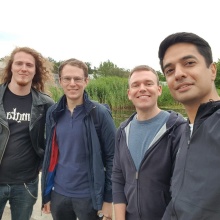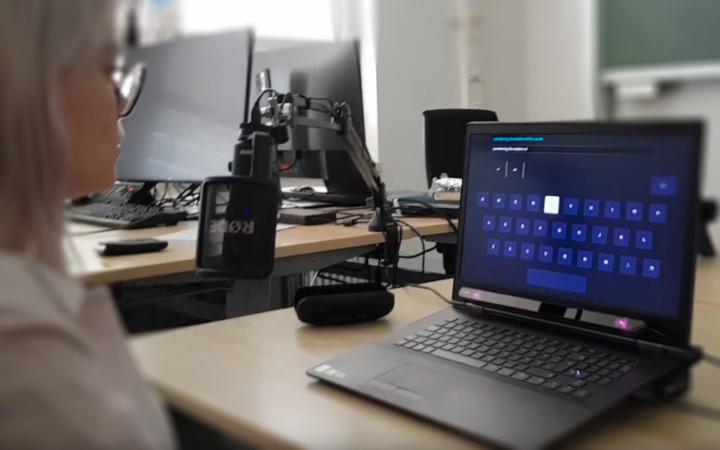More than one million people in Germany suffer from permanent motor impairment and many find it difficult or even impossible to access the internet. The researchers Dr. Raphael Menges, Ramin Hedeshy and Lukas Schmelzeisen from the “Analytic Computing” department at the University of Stuttgart have spent more than five years researching internet accessibility and how digital content is understood by AI. Together with Business Consultant Florian Lerch from TU Munich, they now want to bring their research findings to the market.
In order to do this, the team was awarded funding in September 2021 from an EXIST Transfer of Research grant of more than EUR 645,000, from the German Federal Ministry for Economic Affairs and Energy (BMWi) funding program, which is co-financed by the European Social Fund (ESF). The grant will be used to finance four full-time positions for the founders for one and a half years, as well as the required material resources.
Using research findings to make a product
The team's research over the recent years has been a great success. In particular, the research project “GazeTheWeb”, an internet browser with eye tracking, impressed users, researchers and experts with its intelligent understanding of websites and its innovative interaction. As part of the European project MAMEM, the browser was tested by 30 test subjects with significant motor impairment in Greece and Israel over the course of one month, and it is still being used by some of the test subjects today. GazeTheWeb has won five awards, including for its user-friendly character at the "Web for All Accessibility Challenge" in Perth, for its innovative technical approach at "TheWebConference", and for its digital significance at Unitymedia's "Digital Imagination Challenge". Building on this success, the Semanux team has begun to explore other innovative interactions, such as the combination of touch and gaze control for fast and reliable text input, and combining non-voice communication through humming with gaze control for a rhythmic approach to the contactless operation of digital systems.
The funding from EXIST Transfer of Research has given the team the opportunity to use their research findings to develop a product ready for the market. For its practical work over the next few months, the team will continue to use the laboratories and offices belonging to the “Analytic Computing” department at the University of Stuttgart.
Comprehensive support from the University of Stuttgart
The team praises the outstanding support their start-up project has received from the University of Stuttgart. Dr. Raphael Menges summarizes: "Without the extensive support we have received from the University of Stuttgart, we would not have succeeded in completing the complex application for the EXIST Transfer of Research funding. I would particularly like to emphasize the excellent support provided by our two mentors. Prof. Dr. Steffen Staab, who is head of the department "Analytic Computing" and one of the world's leading experts in the research on the Semantic Web offered us support as a scientific mentor. And, of course, the advice we received from Prof. Dr. Alexander Brem, who is head of the the Institute for Entrepreneurship and Innovation Science and served as a mentor for entrepreneurial aspects. Furthermore, we also received excellent support from the start-up coaches at the Institute for Entrepreneurship and Innovation Research at the University of Stuttgart, its start-up network and the Cyber Valley Consortium."
Who is behind Semanux?
- Dr. Raphael Menges as Project Leader
- Ramin Hedeshy, responsible for the field of human-computer interactions
- Lukas Schmelzeisen, responsible for the field of machine learning
- Florian Lerch, responsible for business planning



